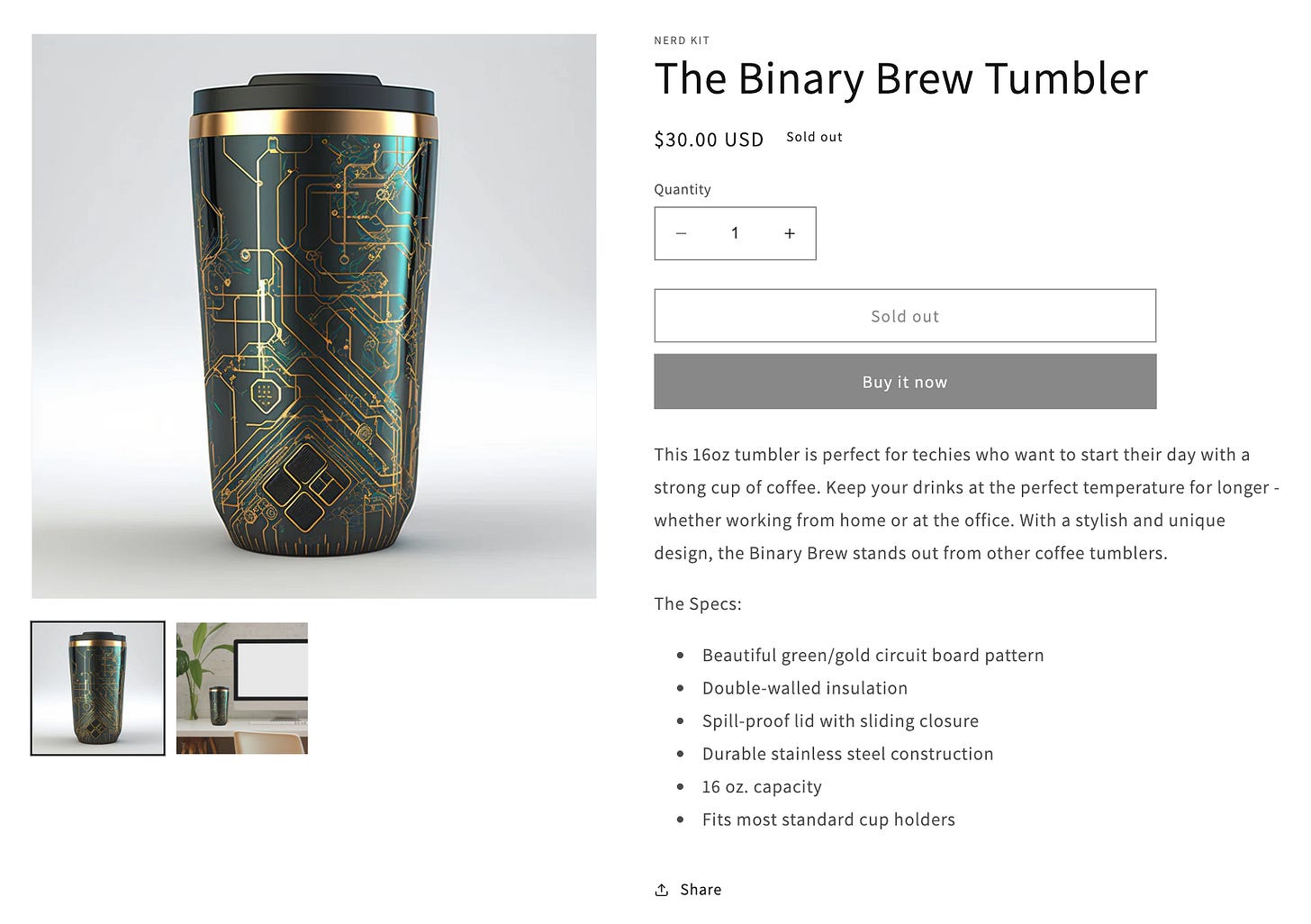Building an e-commerce brand with AI
Prototype products in minutes, for the cost of a latte.
Note: This post uses Midjourney V4. Some of the design and upscaling options have changed for V5.
Instead of spending thousands to prototype a new product, you can use AI tools to design, market, and test new ideas in a matter of minutes, for the cost of a latte.
Take the image above: the photos, title, and description were all created using AI. Let’s take a closer look at how it was done.
To follow along, you'll need access to:
Huge thanks to reader Katrina McKinnon, content writer and founder of CopySmiths for the inspiration for this post!



